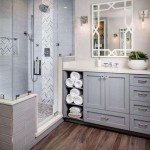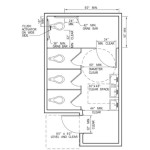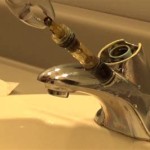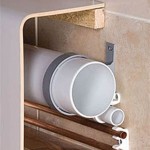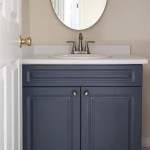Bathroom Vent Thru Roof: Essential Aspects to Consider
A bathroom vent through the roof might be a small improvement, but it can significantly impact air quality and humidity control. When it comes to bathroom venting, there are a few essential aspects to consider to ensure proper installation and effective operation.
1. Choosing the Right Vent
The first step is to select the correct vent for your bathroom. Several types of bathroom vents are available, so it's important to consider the size of your bathroom, the amount of moisture produced, and the desired noise level.
For smaller bathrooms, a simple exhaust fan may suffice. However, larger bathrooms or those with high humidity levels may require a more powerful ventilation system, such as a whole-house fan or a heat recovery ventilator (HRV).
2. Proper Installation
Proper installation is critical to the effectiveness of your bathroom vent. The vent should be installed according to the manufacturer's instructions and local building codes.
The vent should be mounted on the roof in a location that will allow for proper airflow. It's also important to ensure that the vent is properly sealed to prevent moisture from leaking into the attic or roof.
3. Ductwork and Ventilation
The vent should be connected to a ductwork system that will carry the moist air from the bathroom to the outside. The ductwork should be properly sized and insulated to prevent condensation and mold growth.
The vent should also be equipped with a backdraft damper to prevent outdoor air from entering the bathroom when the fan is not running.
4. Maintenance and Cleaning
To ensure that your bathroom vent is operating effectively, it's important to perform regular maintenance and cleaning.
The vent fan and ductwork should be cleaned periodically to remove dust, dirt, and other debris. The backdraft damper should also be inspected and replaced if necessary.
5. Energy Efficiency
Consider energy efficiency when selecting a bathroom vent. Look for models with Energy Star certification, which indicates that they meet certain energy-saving standards.
You can also save energy by using a vent that is controlled by a timer or a humidity sensor. These devices will automatically turn on the vent when needed and turn it off when the humidity level drops.
Conclusion
By following these essential aspects, you can ensure that your bathroom vent is properly installed, maintained, and energy-efficient. This will help to improve air quality, reduce humidity levels, and prevent mold and mildew growth in your bathroom.

Bathroom Exhaust Fan Can Vent Out Through The Wall Or Up Roof Building America Solution Center

Installing A Bathroom Fan Fine Homebuilding

Blog

Venting A Bathroom Through Sips Fine Homebuilding

Bathroom Vent Piping To Near Exterior Inspecting Hvac Systems Internachi Forum

Broan Nutone 3 In To 4 Roof Vent Kit For Round Duct Steel Black Rvk1a The Home Depot

Venting A Bath Fan In Cold Climate Fine Homebuilding

Why Does The Upstairs Bathroom Vent Fan Leak Every Time It Rains Quora

Why Does My Bathroom Ceiling Fan Drip Foothills Roofing Calgary

Roof Ventilation Tile Bathroom Exhaust Vent Extractor
Related Posts
